Often, worms appear in preschool and elementary school age children. Where do Worms Come From? The main cause of helminthic invasion in children is improper hygiene. Toddlers don’t always wash their hands, they like to put their fingers in their mouths, bite their nails, and eat unwashed fruits and vegetables. The development of helminthic invasion occurs if a person has weakened immunity. The immune system in newly formed children, it is unable to cope with a large number of foreign agents. The symptoms of worms in children resemble the symptoms of poisoning or gastrointestinal tract disease.
Why are worms harmful to a child's body? They damage internal organs, absorb nutrients, cause inflammation. Toxins secreted by helminths adversely affect the baby’s nervous system. You can get rid of worms with the help of traditional and folk medicine.

Types of helminthiases in children
Helminths in children appear quite often, especially in preschool age. The risk of infection is always at a high level. The child can get the infection in kindergarten, on the playground, in contact with animals. In addition, children often neglect to wash their hands after using the toilet, before eating.
What are worms? Worms are a large group of parasitic worms. They can live in the intestines, liver, respiratory tract, some can affect the heart and brain. The main types of worms in children:
- Ringworm - the most numerous class of human parasites, including cream worms, ringworm, mineworm, trichinella.
- Tapeworms - classes include bovine and pig tapeworms (tapeworms), echinococcus.
- Trematodes are genetic worms, these include schistosomas, opisthorchis, flukes (liver and cat).
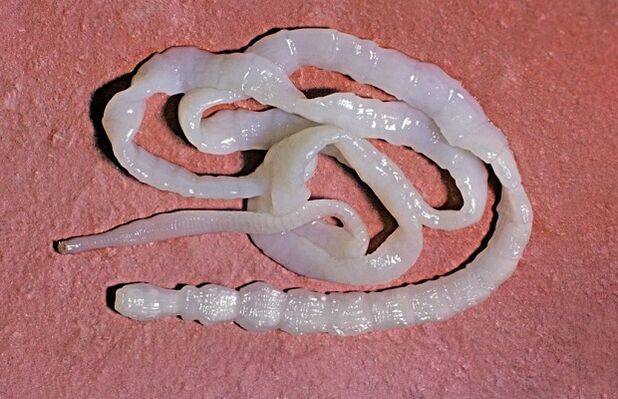
In addition, parasitic diseases are caused by protozoa (protists) - unicellular organisms; in the human intestine, Giardia or amoeba become parasites.
Diseases caused by parasites in children have different levels of danger, but have similar symptoms. Most ringworms are parasitic in the gastrointestinal tract, found in the contents of the duodenum, in feces. The source of nutrition for worms is digested food (most often carbohydrates), sometimes blood. Helminthiases in children have symptoms similar to eating disorders or gastrointestinal diseases.
The most common type of helminthiases in children
Children are more susceptible to worm attacks than adults. The most common helminthiasis in children:
- Enterobiasis (pinworm infection).
- Ascariasis (invasion of ascaris).
- Giardiasis (invasion of giardia).
Pinworms only live in the gut. Migrating ringworm larvae enter the respiratory tract, liver and heart. Giardia very often causes liver and gallbladder disease, although they cannot survive in these organs. Is the disease contagious?
Enterobiasis is spread from person to person by shaking hands, in contact with household items used by patients.
Ascariasis and giardiasis, in certain circumstances, can also be transmitted from infants to other family members.
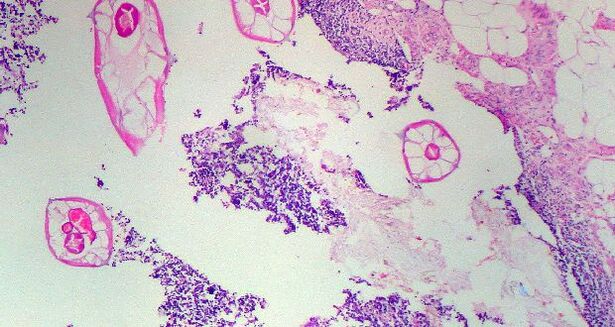
Enterobiasis
The main cause of cream worm infection is dirty hands. Also, parasite eggs can get into a baby’s body when eating fruits that are not washed properly. Signs of infection with worms appear after 3-4 weeks from the date of infection. A hallmark of enterobiasis is itching in the anal area, which appears during sleep. The unpleasant sensation is caused by the movement of the female worm, which crawls out to lay eggs. With strong aggression, you can see worms in a child’s feces with the naked eye.
When a baby scratches the anus, and then a hand gets into the mouth (which often happens in young children), re-infection occurs. Therefore, during the treatment period of helminthiasis, children should be monitored so that they wash their hands regularly and eat only well-processed foods.

Ascariasis
Ringworm infections occur through unwashed products, insufficiently heat -processed meat, through contact with animals. Parasites enter the baby's body in the form of eggs and larvae. The eggs develop in the intestine, the larvae begin to migrate through the blood and lymph vessels. They reach the liver, the right ventricle of the heart, the lungs. These organs are regularly and abundantly supplied with oxygen, which is essential for the larvae to grow into adults. From the lungs, the larvae will enter the bronchi, trachea, cough and be swallowed with saliva into the stomach. The cycle of movement continues until the larvae grow.
With worms in children, in addition to the usual symptoms, a strong cough may appear. Helminthiasis in children is detected using coprograms, and specialized blood tests.

Giardiasis
Giardiasis in children develops when more than 10 cysts enter the body. The cyst is immobile, resistant to environmental conditions, a form of lamblia existence from which, under favorable conditions, reproductive capable individuals develop. Motile protists can only survive in conditions created only in the human small intestine.
Stages of development of Giardia invasion in humans:
- Cysts from the oral cavity enter the stomach, and then into the duodenum. The protective capsule is destroyed, two Giardia are released.
- Giardia eat simple carbohydrates, multiplied by half longitudinal cell division.
- Part of the parasite enters the large intestine, where it can exist only in the form of cysts.
- During defecation, the cyst comes out, entering the external environment.
Giardia cysts can be found in water, vegetables, fruits, meat, home surfaces. They are very durable, difficult to destroy with conventional detergents. The risk of human -to -human transmission is low.

Common symptoms of helminthiasis in children
The first signs of worms appear 2-4 weeks after infection. Worm attacks in children can occur in acute or latent form. If the parasite population is small, then the baby may not feel uncomfortable.
The main symptoms of worms in children:
- Pain in the abdomen of varying localization and intensity, indicated by seizures.
- Stool disorders, diarrhea and constipation.
- Nausea and vomiting.
- Reduces or, conversely, a cruel appetite.
- Intestinal dysbacteriosis.
- Loss of energy, dizziness.
- Sleep disturbances.
- Dermatitis.
- Pale skin, blue circles under the eyes.
- Girls may experience urinary incontinence.
Dermatitis (rash, redness, itchy skin) is the result of an allergic reaction to toxins released by helminths. Harmful substances also affect the state of the nervous system. Children look tired, become irritable, fickle.
Acute infection is accompanied by symptoms of helminths in children-fever, vomiting, diarrhea.
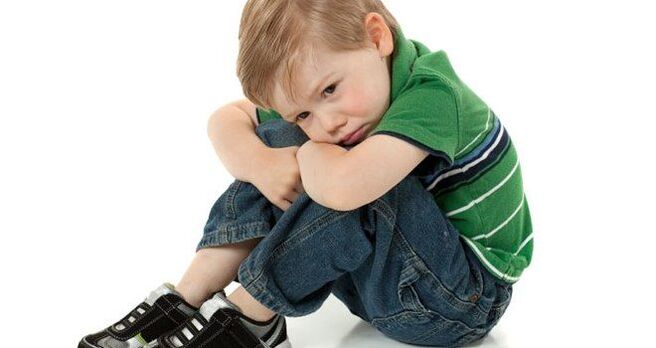
Tests for helminths in children
How to identify worms in children? Worm attacks in children are difficult to determine by the clinical picture. The symptoms of different helminthiases are similar to each other. Worm detection is done with the help of time -tested and new laboratory diagnostic methods.
- Histological analysis of feces allows you to check for the presence of helminth eggs in the feces.
- Microscopic examination of abrasions from the anus (helps identify enterobiasis).
- Analysis of duodenal contents. In the duodenal contents, worms or protozoa can be found.
- General blood test with leukocyte formula. Indirect signs of the presence of worms are increased levels of eosinophils and anemia.
- Serological testing for antibodies to helminth antigens.
- Analysis by polymerase chain reaction (PCR).
PCR is the most reliable and sensitive method for diagnosing helminthic invasion. Blood, feces, abrasions are suitable for analysis. This study determined the presence of foreign DNA in biological samples. The efficiency of histological coprograms is less than that of PCR and ELISA.
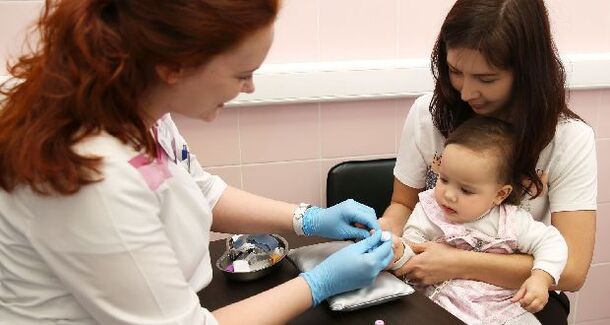
Principles of treatment of helminthic invasion
How to Get Rid of Worms in Children? The method of treatment depends on the type and degree of helminthic invasion. Usually, helminthiases are treated conservatively (without surgery), but surgery is performed to remove the echinococcal cyst.
Worm treatment in children consists of several stages:
- Preparing the body for treatment.
- Actually therapy, taking anthelmintic drugs.
- Recovery of the body after pain and medication. It is necessary to normalize the function of the nervous system, increase immunity, get rid of intestinal dysbacteriosis.
Usually the treatment period takes about three months. Before starting therapy, you need to determine exactly whether the child has worms. Treatment is prescribed and controlled by a doctor.

Drug therapy of helminthiases in children
An integrated approach will help to cure any type of helminthiases completely, without harming the body. You can treat worms in children using certain medications:
- Anthelmintic drugs. They include antiparasitic drugs that differ in their spectrum and principle of action. Appointed depending on the type of aggression. It will be easier for the baby to take the medication in the form of a suspension.
- Sorben. Binds toxins, accelerates the removal of worms from the body. Only strictly prescribed doses of sorbents can be taken, otherwise serious digestive disorders may occur.
- Anti -allergic agents. Helps relieve the symptoms of allergies to helminths waste.
- Hepatoprotector. Assign during the recovery period. Helps normalize liver function.
- enzyme supplies. Restores normal digestion.
In the treatment of enterobiasis, patients are also prescribed an enema. If the baby has a predisposition to constipation, the doctor will prescribe a baby laxative. It is important to prepare stools regularly so that parasites and toxins are eliminated from the body. It is impossible to take any medication uncontrollably, as there are possible side effects.
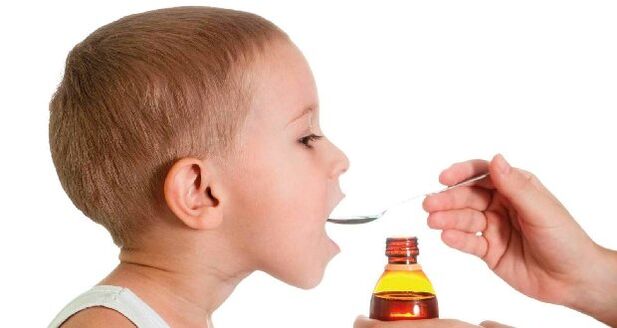
Traditional medicine for worms
Traditional medicine is not desirable to use for the treatment of helminthiasis in children. They do not kill worms and do not help remove them from the body. Folk remedies can only be used in combination with drug treatment.
How to remove worms from children by folk methods? There are some of the most common recipes:
- Pumpkin seeds. Contains components that interfere with the normal functioning of worms, removing toxins. Peeled seeds (100 g) are crushed and poured with olive oil (100 ml). Tincture is given to children before meals (three hours) for three days. Treatment was repeated after 2 days. Pumpkin seeds can be boiled in milk (15 seeds in 1 glass). The medicine is given to the baby to drink before lunch.
- Mix garlic. A few cloves of garlic (2-3) must be rubbed on a fine grater, mixed with a little water until smooth. For small children, garlic gruel mixed with a tablespoon of milk or orange juice, given to drink before bed.
- Onions in oil. 100 grams of chopped onions, covered with a teaspoon of salt, poured with 50 ml of sunflower or olive oil. The mixture is given to the baby for five consecutive days before bedtime.

Beet-carrot juice, echinacea tincture will help boost children's immunity. Restore the nervous system - chamomile tea. Chamomile is also used for enemas for enterobiasis.
Folk remedies are contraindicated in children with peptic ulcer, gastritis, pancreatitis, predisposition to allergies. And, of course, before you start testing the "grandmother's recipe" on children, first consult a pediatrician and parasitologist, otherwise the results of such therapy can be the most unpredictable.
Supplements and homeopathy for worms
The Internet is full of advertising of biologically active additives (BAA) and homeopathic remedies, which, according to the manufacturer, will completely eliminate worms. Reviews about the fund are very positive.
Why should nutritional supplements not be used to treat worms in children? Biologically active supplements help normalize metabolism, increase immunity, improve the function of internal organs, but do not get rid of parasites. They can only be used in combination with traditional medicine.
Homeopathic preparations consist of a complex of natural extracts. They also have no adverse effects on worms. But they can boost immunity, restore metabolism. In many countries today it is forbidden to prescribe homeopathic remedies because they are ineffective.

Prevention of helminthiases in children
Prevention of the appearance of helminthiasis in children includes simple steps:
- Cleanliness. Parents should ensure that children always wash their hands, bathe or shower, do not bite their nails, do not put toys in their mouths.
- Adequate heat treatment for meat and fish.
- Scraping is common for enterobiosis (this procedure is performed in kindergarten).
- Healthy sleep, adhere to a daily routine.
- Balanced diet.
- Take vitamins.
Drug prophylaxis should be carried out if a case of infection is recorded in kindergarten or school, one of the family members or a pet has been infected.
Symptoms of helminths in children are easily confused with manifestations of food poisoning, diseases of the gastrointestinal tract. How to find out if a child has worms, the doctor will tell you. Children can be treated for worms after an accurate diagnosis is made under the close supervision of a specialist. Concerned parents should understand that the health of young children is entirely in their hands.






































